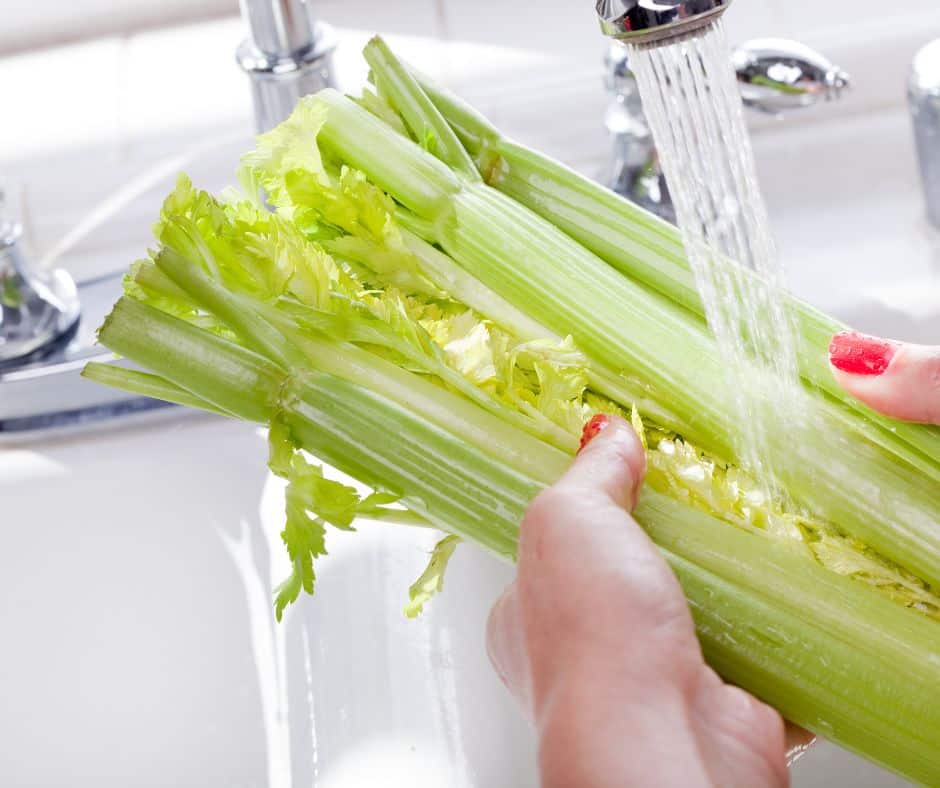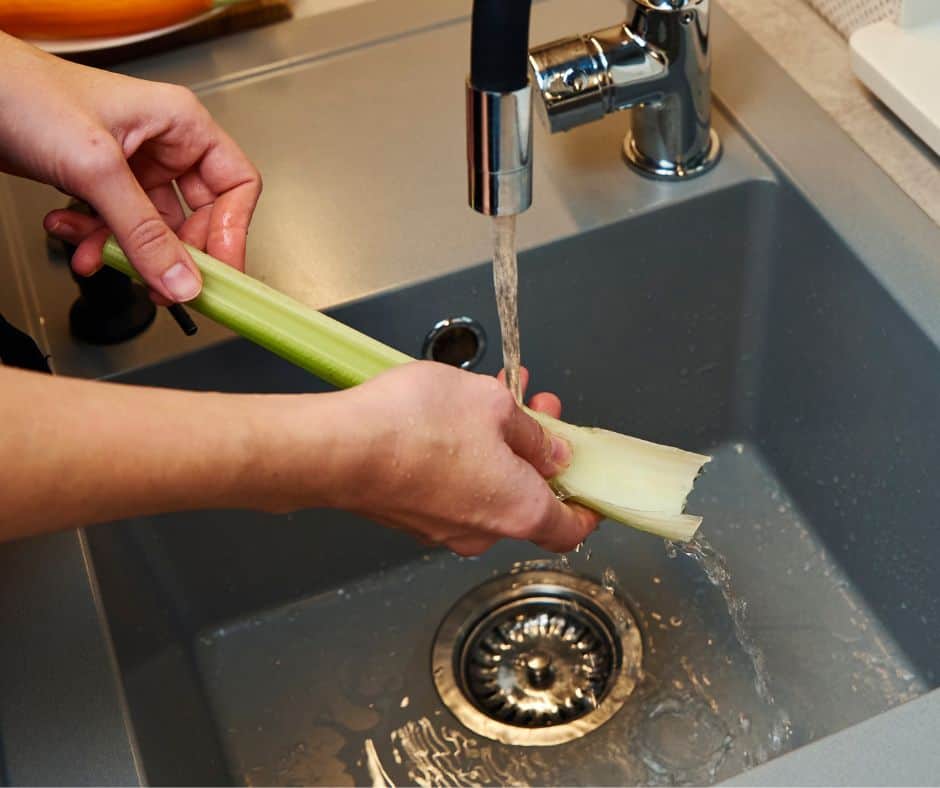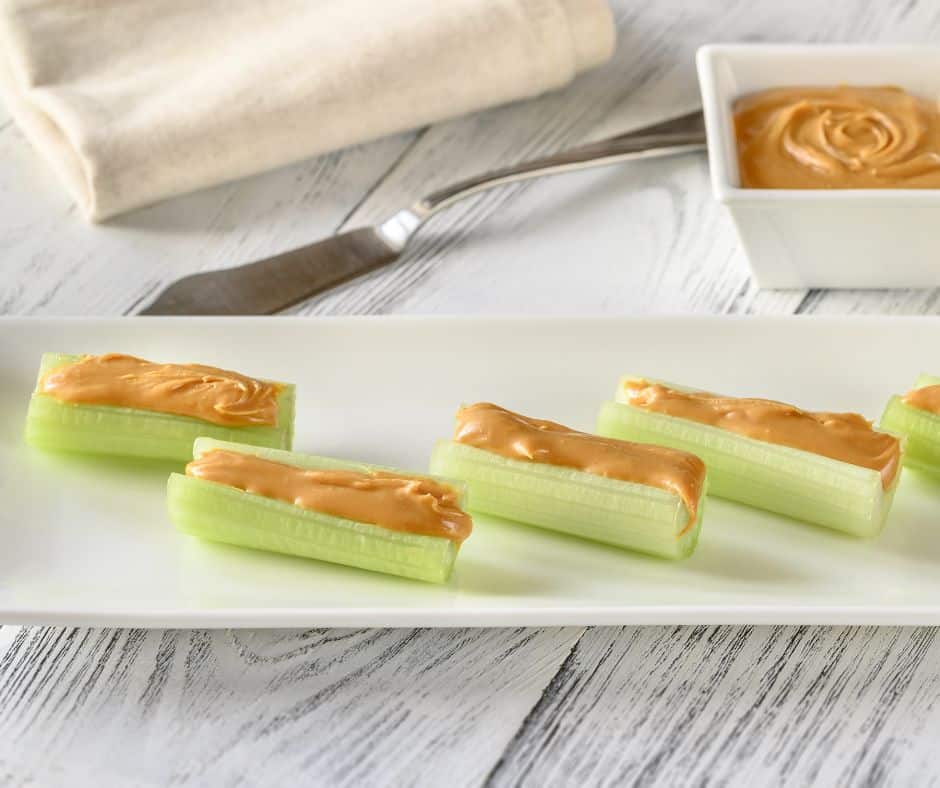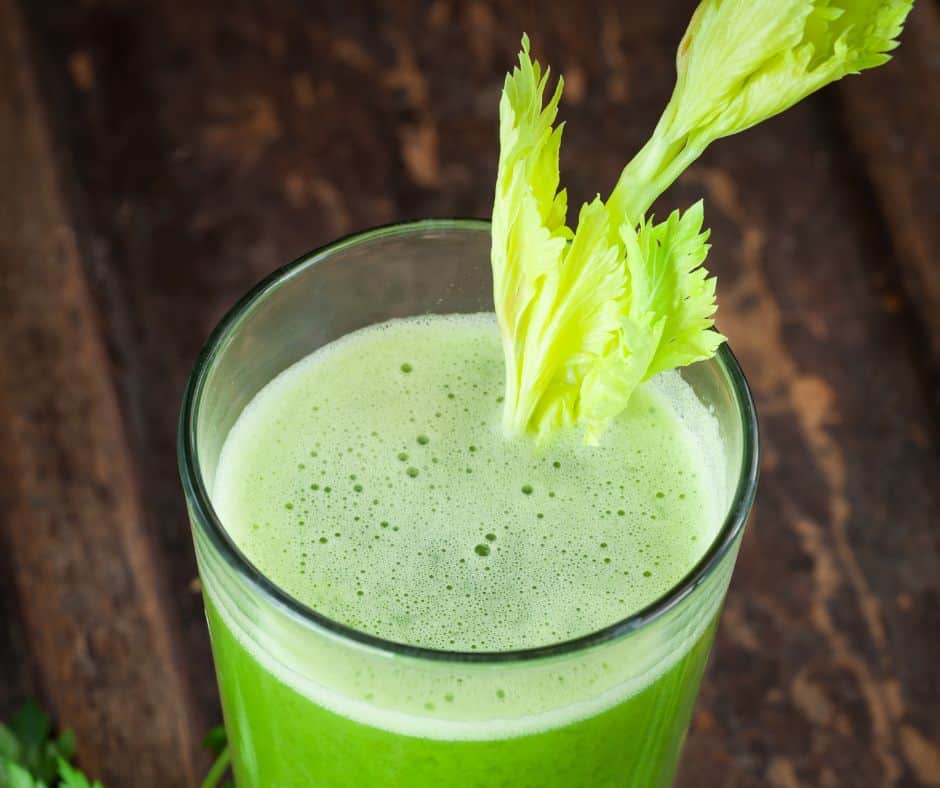How To Clean Celery
Celery is a nutritional powerhouse made up of many of the vitamins and minerals we need to be healthy. Unfortunately, it’s also high ranking on the “Dirty” list of produce high in pesticides. So here is the best way to wash your celery well.

What is Celery?
Celery is a vegetable that grows our of the ground. There are usually several stalks that grow up from a central root. Celery is a versatile vegetable that can be used in soups, stews, as a snack, in a Bloody Mary, or as part of a crudité platter with other vegetables. In recent studies, fresh celery juice has been found to be very healthy. According to one study, “Celery has antioxidant, anti-inflammatory, anticancer, antirheumatic, anti-hypertension, antidiabetic, and neuroprotective properties.” [source]
Celery is good for you for other reasons too. It is high in Vitamin A, Vitamin C, Vitamin K, Potassium, and Folate. Plus it only has around 14 calories per stalk, making it a great snack for staying healthy. [source]
Stalks of celery are relatively easy to clean and prepare, but it is important to do it properly to avoid any potential foodborne illnesses such as E.coli and prevent increasing exposure to pesticides and fertilizers. In this post, I will walk you through step-by-step on how to clean celery effectively.

How To Clean Celery
Step 1: Cut The Celery
Using a cutting board and a sharp knife, cut the entire celery root off the celery. This is the fastest and easiest way to remove a lot of the dirt since it likes to hide between the stalks where they connect to the root. You can also break each stalk off one at a time to wash and eat individually.
Step 2: Rinse The Celery
Start by rinsing the celery stalks thoroughly under cold running tap water for a couple of minutes. Cold water will actually help keep bacteria from growing and it has been found that running water removes more pesticide residue than soaking vegetables in a large bowl of warm water [source]. Make sure to rinse the entire stalk, including the leaves and the bottom of the stalk where it attaches to the root. Get all of the soil remnants off of the bottom of the stalk as best you can using a wet paper towel or vegetable brush if the dirt is being particularly stubborn.
Step 3: Trim the ends
Use a sharp knife to trim off the leafy greens of the stalk and also the base of the stalk. When chopping the base, I normally like to chop most of the white section off or if I could not get all the dirt off when I rinsed it, I will cut off the section with the dirt. If you like to make vegetable stock, then save the pieces you cut off to add to your stock.
Step 4: Dry the Celery
It is always a good idea to dry any produce you wash as best you can. Storing celery that is wet could cause it to rot faster and also cause more bacterial growth. So dry your celery stalks with a clean towel or paper towel. You could also use a salad spinner.
Step 5: Cut The Stalks
Depending on how you use the celery, there are many different ways to cut it. If you are planning a meal that needs a Mirepoix, then I suggest slicing the pieces thinly or chopping them. But if you plan to have them for snacking, then cutting them into celery sticks is usually preferred.
Step 6: Store the celery
Once you have cleaned and cut the celery, it is important to store it properly. Wrap the celery in aluminum foil or damp paper towels and place it in an airtight container or a resealable bag. Store it in the refrigerator for up to a week.
How To Deal With Pesticides on Celery
Despite all of its health benefits, celery is on the dirty dozen list [source]. Meaning it is laden with pesticides that nobody should really eat. But by washing the celery correctly, you can get rid of the chemicals on the surfaces of the stalk. Here are a few ways to get rid of the pesticides on your celery.
- Buy organic celery: organic produce naturally has less pesticides and other chemicals on them.
- Run celery under cool water while in a strainer. According to a study, the most chemicals are removed when leafy vegetables are run under water thoroughly and then blanched. [source]
- Soak in a 1:1 solution of baking soda water. [source]

How To Eat Clean Celery
An easy and great way to use clean celery is to just eat it as a snack. No need for anything else. But if you are not a purist like me, here are a few other ways to use celery and an easy and healthy snack.
- eat it celery with cream cheese
- try it with peanut butter
- dip it in hummus
- add it to a veggie platter and dip it in ranch
- add it to a smoothie
Celery is also great for cooking
- make a mirepoix and freeze it for the next soup you make
- roast it with your roast chicken and vegetables.
- use it to make a vegetable or chicken stock.
You can use it for its juice
Juicing is a great way to get the nutrients out of fresh fruits and vegetables. You can drink the pure juice from celery or add the fresh juice into a juice mix.

What To Do With Celery’s Unwanted Parts
Make sure you don’t throw away all the parts you don’t plan to eat. There are a variety of ways you can use them.
- Leaves can be used for flavoring or garnishing salads, soups and stews.
- Both the leaves and base can be used to make vegetable stock.
- You can compost any leftover parts of your celery in a compost tumbler.
- The base of the stem can be replanted (even if you got it from the grocery) and will grow more celery for you!
Why does celery sometimes have a bitter taste?
Sometimes celery can have a bitter taste. The bitterness is only in the darker green stalks of raw celery. So when you are buying your celery you can pay special attention and look for a light green color, or only buy the darker stalks when you plan to cook the celery. Cooking celery will mellow out the flavor significantly.
How do you remove celery strings?
There are two tricks to removing celery strings. The first is to use a vegetable peeler to peel off the outside strings of the celery. Keep in mind that you will lose some of the nutritional benefits by peeling the outside of the stalk off the celery.
The second method is slightly less effective in removing all the strings, but will keep more of the nutritional skin on the outside. To perform this method, hold the celery with the “inside” facing you. Place one hand on each end of the stalk and break the celery stalk with your hands by bending the two ends toward each other. Instead of breaking the strings, pull the strings in one direction or the other to pull them off of the stalk. By breaking the celery in this way, you should notice that many of the larger, thicker strings are removed.
How do you clean celery with vinegar?
Cleaning celery with vinegar is not an effective means of cleaning according to the National Library of Medicine. Instead, use baking soda or running clean water.
How do you clean celery with baking soda?
Use a 1:1 solution of baking soda and water, then soak for 20 minutes.
What is the best way to keep celery fresh?
According to other sites, the best way to keep celery fresh is to wrap it tightly with aluminum foil or a wet paper towel.
Should you wash celery with soap?
Soap was determined by the NIH to be a less effective means of cleaning leafy vegetables than other methods such as running water or a baking soda solution.
Quick Recap For How To Clean Celery:
Running water is one of the most effective ways to clean celery and remove pesticides.
In summary, cleaning celery is a simple process that can be done in a few easy steps. By following these steps, you can ensure that your celery is clean and ready to use in your favorite recipes. Remember to always wash your hands before handling any food and to keep your kitchen clean to prevent any cross-contamination.
Happy Eating!

Related Posts:

Best Ways to Reheat Casserole in the Oven (And How Long)

As a stay at home mom myself, I have found ways to keep myself sane and organized while loving what I do …be home with my kids! After 14 years of being home, I realized other moms may benefit from some of the tips and tricks I have learned over the years. Join me to learn ways to manage your home and life as a stay at home mom so you can make time to enjoy the best part…family. Things I love…feeling motivated, Harry Potter, being outside, and digging deeper into my life and my family’s life in order to make it better. I have a Degree in Biology and am also a freelance writer.
